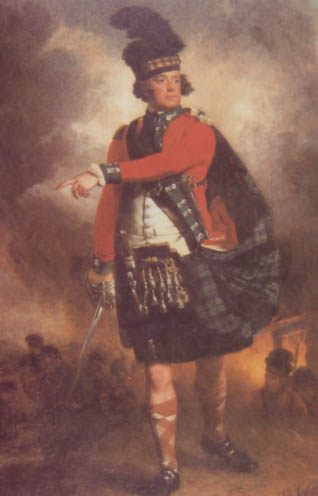
The Service of the
Earl of Eglinton
as
Heir-Male General, and Heir-Male of Provision
to
George, the Fourth Earl of Winton, Lord Seton, and Tranent
Hugh
Montgomerie, 12th Earl of Eglinton
The
origins of the Montgomeries begin with Roger of Montgomery, Earl
of Shrewsbury (d. 1094), one of William the Conqueror’s followers,
though this won't bear examination, the sure pedigree of the
family begins later with Sir John Montgomerie, Lord of Eaglesham,
who fought at the Battle of Otterbourne in 1388 and died about
1398. His grandson, Sir Alexander Montgomerie (d. circa 1460), was
made a Lord of the Scottish parliament about 1445 as Lord
Montgomerie, and Sir Alexander’s great-grandson Hugh, the 3rd Lord
(c. 1460-1545), was created Earl of Eglinton, or Eglintoun, in
1508. The 3rd Earl of Eglinton was a firm supporter of Mary
queen of Scots, for whom he fought at Langside, and in 1612, by
the death of Hugh, the 5th Earl, the male line of the Montgomeries
became extinct. Having no children Earl Hugh had settled his
title and estates on his cousin, Sir Alexander Seton of
Foulstruther (1588-1661), a younger son of Robert Seton, 1st Earl
of Wintoun (c. 1550-1603), and his wife Margaret, daughter of the
3rd Earl of Eglinton. Alexander, who thus became the 6th Earl of
Eglinton and took the name of Montgomerie and was commonly called Greysteel.
He was a prominent Covenanter and fought against
Charles I at Marston Moor. Archibald William, the 13th Earl was
born at Palermo in the 29th of September 1812. He was a
staunch Tory, and in February 1852 he became Lord-Lieutenant of
Ireland. In 1859 he was created Earl of Winton, an Earldom
which had been held by his kinsfolk, the Setons.